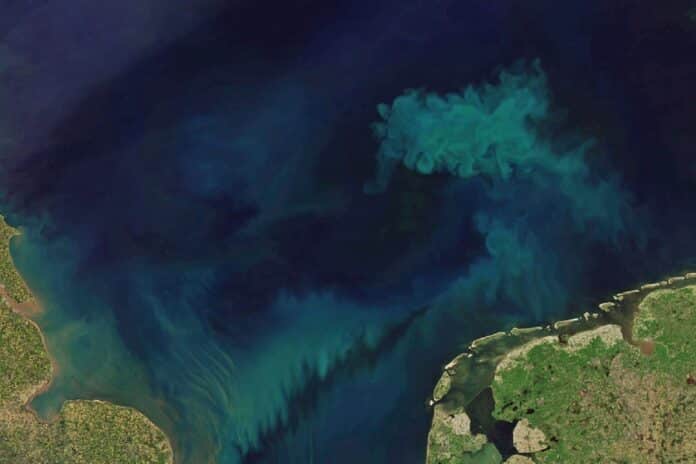Scientists from MIT, the National Oceanography Centre in the U.K., and other institutions have seen variations in ocean color over the past 20 years that cannot be accounted for by purely natural, year-to-year variability.
The team claims that variations in ocean color over the past two decades have been seen but cannot be fully accounted for by natural, year-to-year variability alone in a paper published in Nature.
The world’s seas cover 56% of the planet’s surface, a region more significant than all of the planet’s land, and these color changes. However, imperceptible to the human eye has taken place there. Tropical water areas near the equator have, in particular, become steadily greener over time. Given that the color of the ocean is a direct reflection of the animals and elements in its waters, the change in ocean color suggests that ecosystems within the surface ocean are also changing.
The cause of the shifting color is unknown to the researchers. However, they are confident that human-induced climate change is likely the culprit. For years, they have been conducting simulations that have informed them that these ocean color changes will occur. Not being surprised by it happening in real life is unsettling. And these alterations are compatible with climate changes brought on by human activity.
Lead author B. B. Cael Ph.D. ’19 of the National Oceanography Center in Southampton, U.K., said, “This gives additional evidence of how human activities affect life on Earth over a huge spatial extent. It’s another way that humans are affecting the biosphere.”
The color of the ocean is a visual result of whatever is in its higher levels. In general, deep blue seas reflect very little life. However, greener waters suggest the presence of ecosystems, particularly phytoplankton plant-like microorganisms prevalent in the upper ocean that carry the green pigment chlorophyll.
The pigment aids plankton in absorbing sunlight, which they utilize to absorb carbon dioxide from the atmosphere and convert it to carbohydrates. Phytoplankton are the cornerstone of the marine food chain, which supports a wide range of species, from krill to fish, seabirds, and marine mammals. Phytoplankton also significantly contribute to the ocean’s ability to capture and store carbon dioxide. Scientists are eager to track phytoplankton across the surface oceans and watch how they change.
Dutkiewicz and her colleagues released supplementary research in 2019 demonstrating, using a new model, that the natural variation in other ocean colors is substantially smaller than that of chlorophyll. As a result, any signal of climate-change-driven alterations should be easier to detect than minor, natural variations in other ocean colors. They projected that such changes would be visible after 20 years of monitoring rather than 30.
Cael and his colleagues analyzed ocean color measurements taken by the Moderate Resolution Imaging Spectroradiometer (MODIS) aboard the Aqua satellite, which has been monitoring ocean color for 21 years. MODIS measures seven visible wavelengths, including the two colors commonly used by researchers to determine chlorophyll. The color differences that the satellite
Cael conducted a statistical analysis of the seven ocean colors collected by satellite from 2002 to 2022. He began by examining how much the seven colors varied from region to region over a year, which gave him an understanding of their natural variances. He next zoomed out to study how these annual changes in ocean color altered over a two-decade period.
This research revealed a distinct pattern greater than the regular year-to-year variation. He next looked at Dutkiewicz’s 2019 model 2019 to see if this pattern was due to climate change. The greenhouse-gas model indicated that a substantial trend would emerge during the next 20 years, causing changes in ocean color.
The researcher said, “The color of the oceans has changed, And we can’t say how. But we can say that color changes reflect changes in plankton communities that will impact everything that feeds on plankton. It will also change how much the ocean will take up carbon because different types of plankton have different abilities to do that. So, we hope people take this seriously. It’s not only models that are predicting these changes will happen. We can now see it happening, and the ocean is changing.”
This research was funded by NASA.
Journal Reference:
- Cael, B.B., Bisson, K., Boss, E. et al. Global climate-change trends detected in indicators of ocean ecology. Nature. DOI: 10.1038/s41586-023-06321-z
